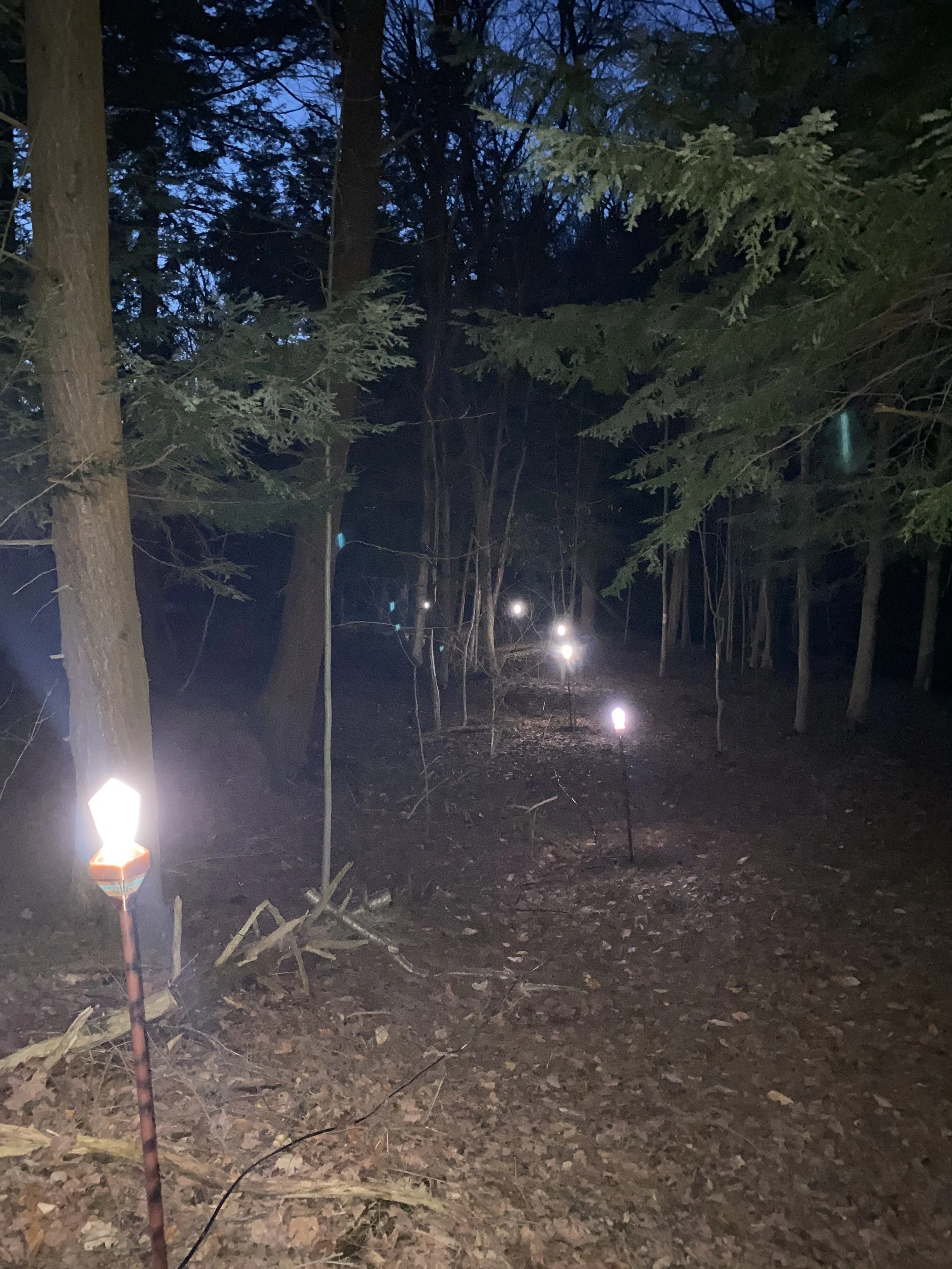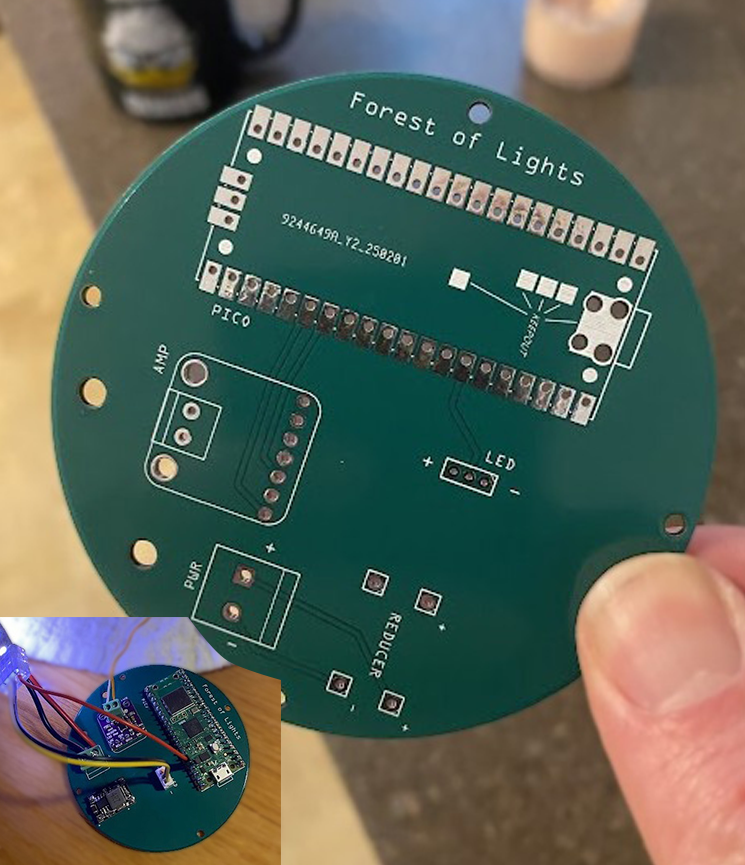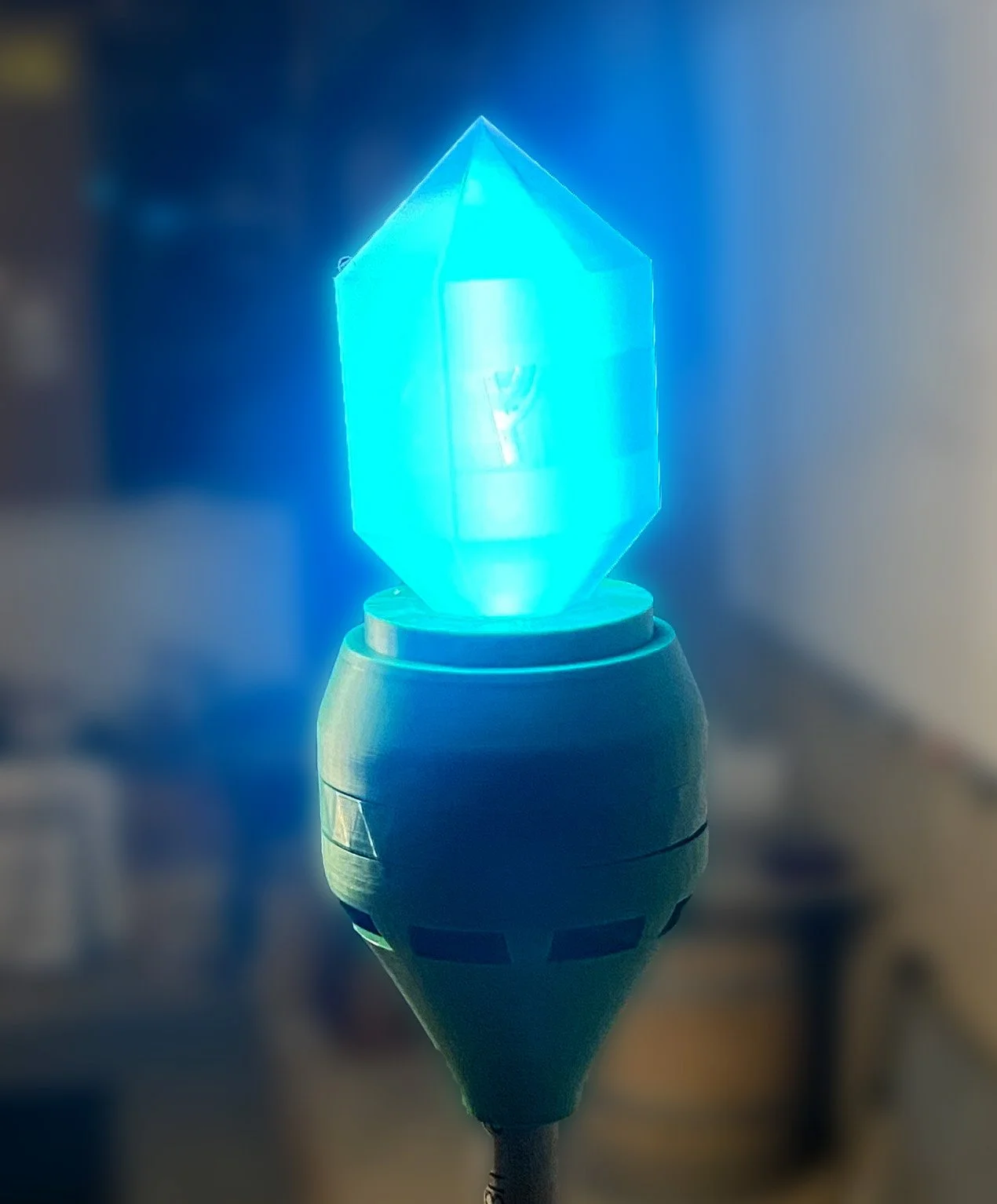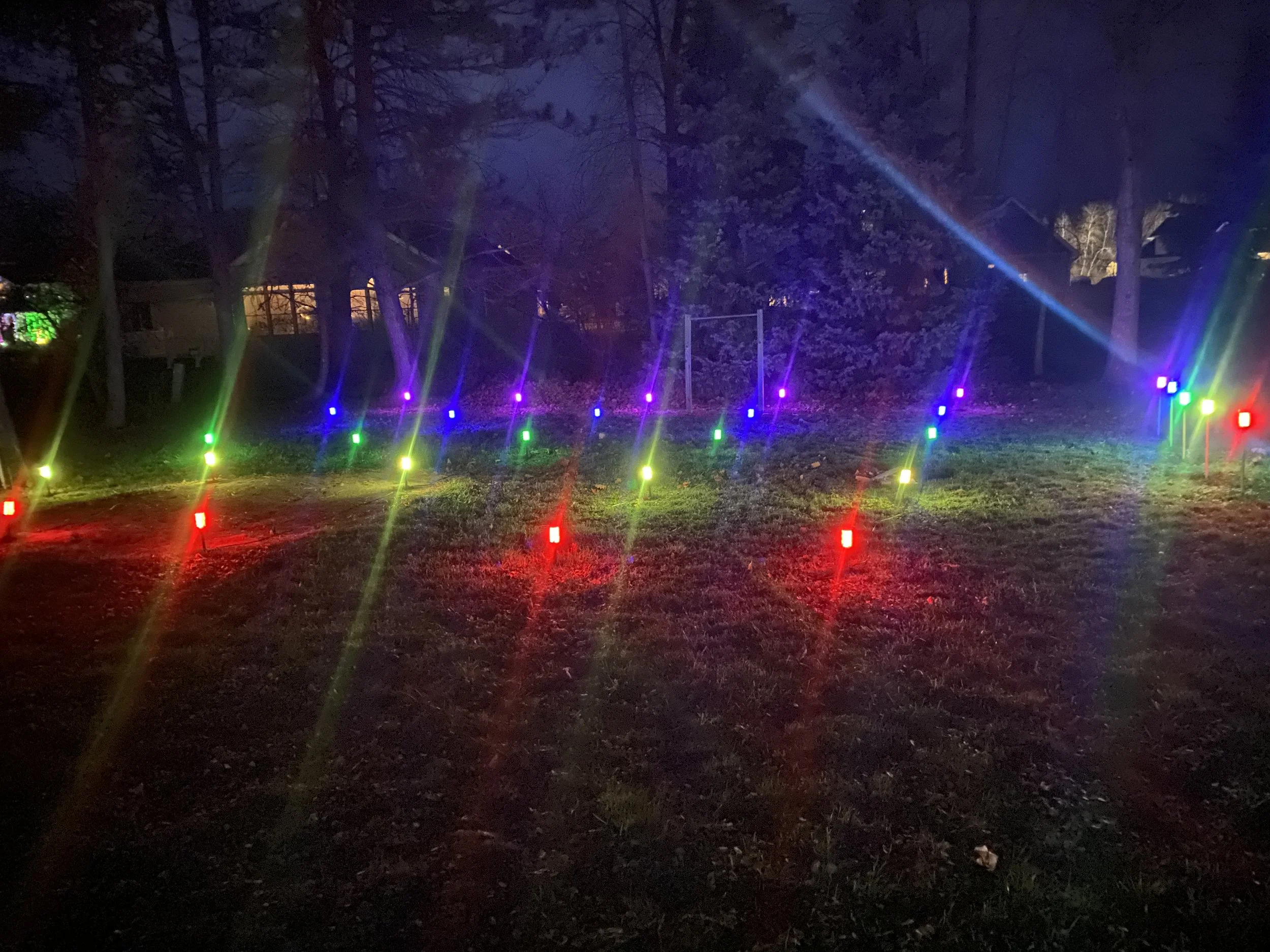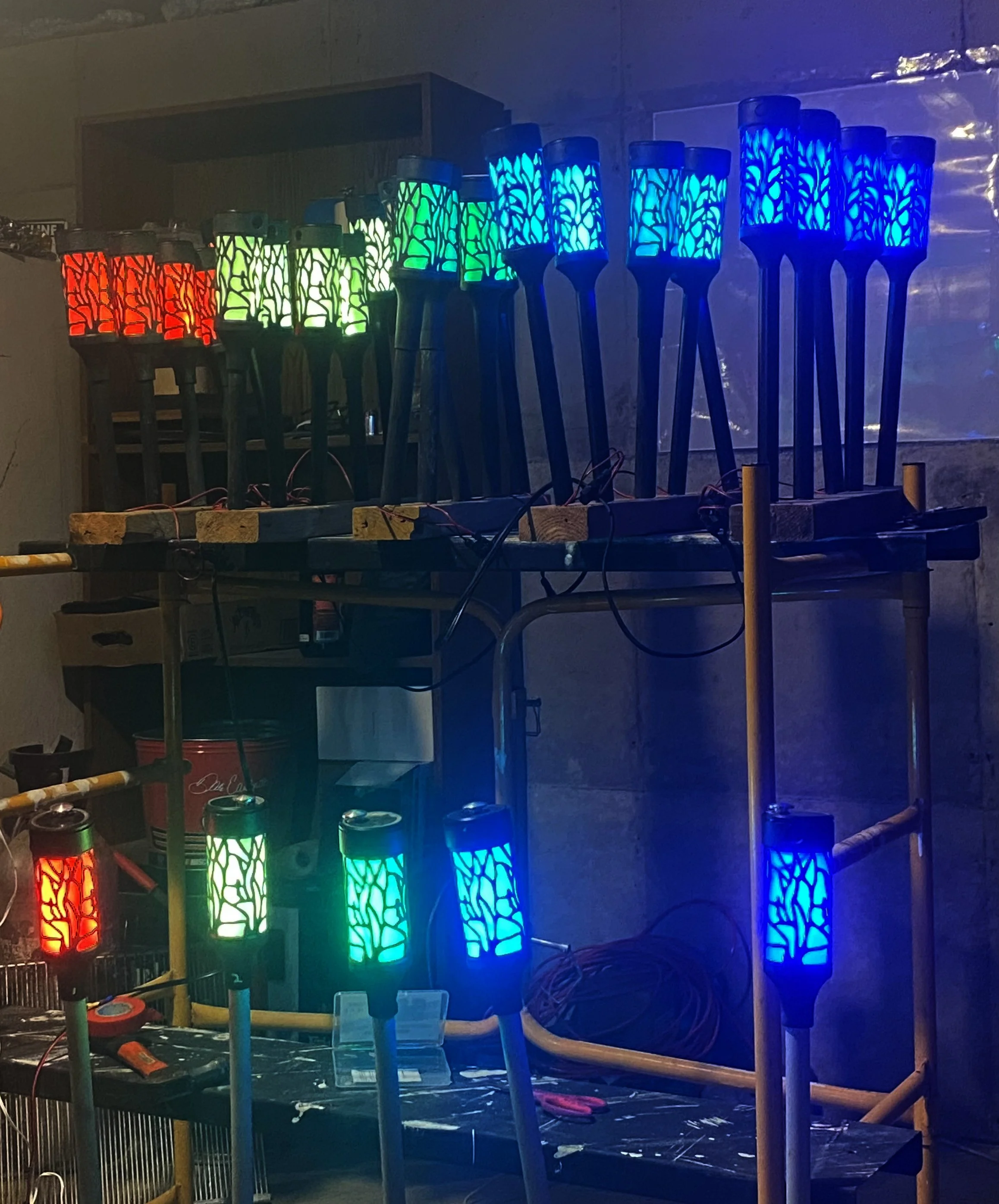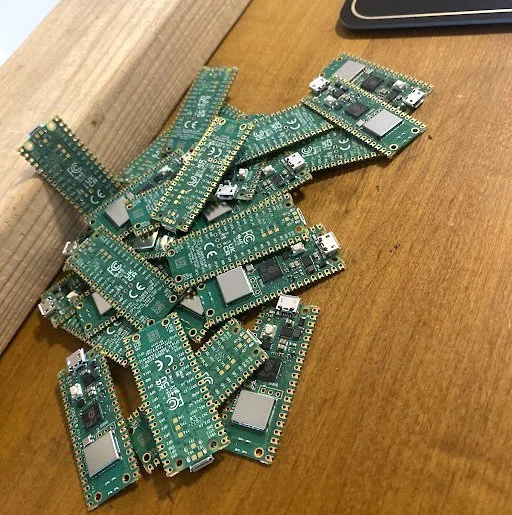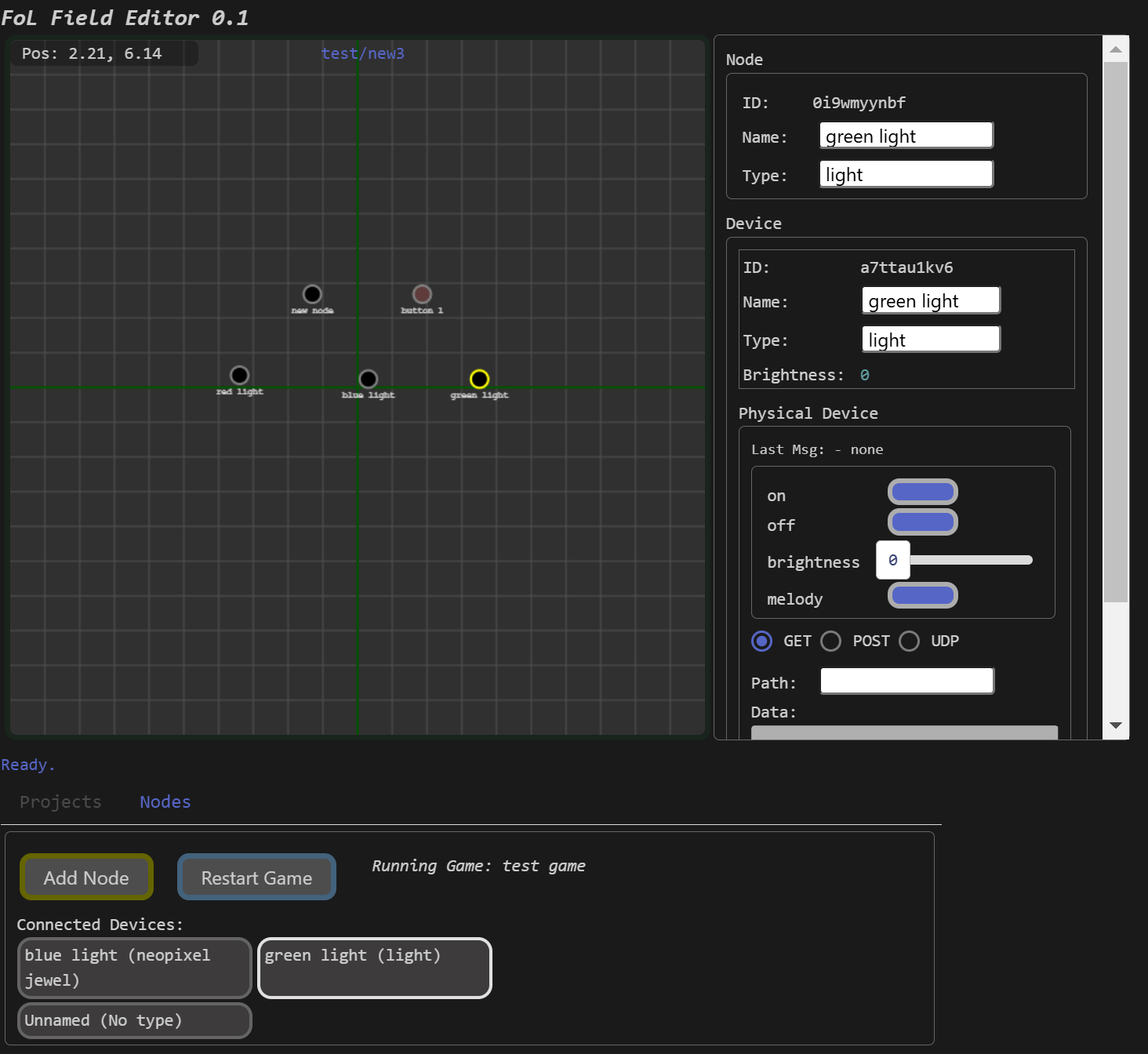We’ve had gorgeous early spring weather here in Western New York which gave us the opportunity to demonstrate the light nodes in the forest. The results are stunning and it’s easy to see the potential.
Lighting Effects
One of the keys of our project is to create a visually stunning experience. In this example we control each of the 10 LEDs individually which really adds life to the node. We hope to create a library of effects we can summon at will.
Circuitry!
Our circuit boards have arrived! It feels like some crazy advanced science we’re working with now. This will make assembly so much easier!
Heptagons - The forgotten shape
3d printing allows us to experiment with different forms easily. Like this heptagonal crystal which adds an enchanted feel to the experience.
Dynamic Lighting Adds Life
We have a new tool in our belt - our lights can now dance to the sound they produce. You’ve seen this effect before I know, but this time the power is ours. OURS!
A 3d Printed Prototype
3 Pieces complete with 10 LEDS and a 3” speaker. Our design goals: Affordable, cool, and easy to build.
January Update
It’s critical that we be able to stream sound to the nodes in a dynamic way. The moving sounds are essential to creating a unique and immersive experience. We’ve taken a big step this week as seen in this video, where the laser sound ‘travels’ along the nodes as it moves.
The sounds are streamed from the server opening the door to dynamic sounds such as speech and mixed effects. We’re also looking into what size speaker we’ll need so we can hear it over the ambient atmosphere from at least 20 feet away.
This month we’ll be looking at continuing sound processing, determining player location (we’re looking at BLE), and cool new housings for the nodes.
AI for articulating the vision
I’m playing with Sora to try and articulate the vision a little better. Sora builds some creative videos but it often ignores your input. It did create some interesting examples. For instance in this one, I like the idea of using staves as a controller. They can work the same as wands but help you get through the woods :)
Making a Game out of it
To demonstrate interactive potential, we created a simple whack-a-mole game. The 5 green lights have buttons which turn the lights of the column off.
Our First Test Field
Our first test field with the lights in an 8 foot grid. We’ll be testing lighting patterns, usability, and reliability in the coming weeks.
30 Lights Ready To Go
30 lights all individually connected to a central server. Let’s see what we can do with them!
A Mountain of Picos
30 Raspberry Pi Pico microcontrollers just arrived. Time to build some devices!
Let's Write Some Software
Before we can fill the forest with hundreds of devices, there are several intermediate steps that we need to hit. First we’ll install 5-10 lights in the woods and control them from a central server.
One of the keys to the project is software capable of managing dozens if not hundreds of these devices. Progress is encouraging and the goal seems realistic. The software can currently automatically detect Forest of Lights devices on the network and manipulate them over the Wi-Fi network. It can also push software updates to the devices - something we quickly learned was necessary after updating just a few devices.
Matt


